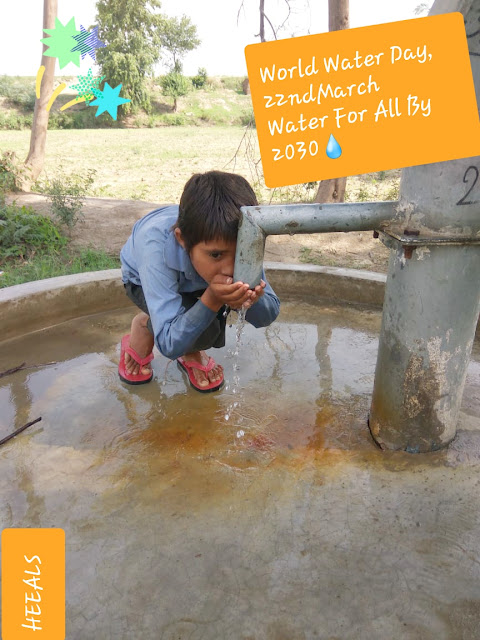 The first social reform issue which
was taken up by the organized women in India was the “Child Marriage Restraint Act”, or the “Sharda Act” od 1929. Its goal was to eliminate the dangers placed on young girls
who could not handle the stress of married life and avoid early deaths. This
act prohibited marriage involving girls below the age of 15 years old, and boys below 18.
The first social reform issue which
was taken up by the organized women in India was the “Child Marriage Restraint Act”, or the “Sharda Act” od 1929. Its goal was to eliminate the dangers placed on young girls
who could not handle the stress of married life and avoid early deaths. This
act prohibited marriage involving girls below the age of 15 years old, and boys below 18.
Although this is a victory for the
women's movement in India, the act itself was a complete failure. In the two
years and five months it was an active bill, there were 473 prosecutions, of
which only 167 were successful. The Act
remained a dead letter during the colonial period of British rule in India,
and this was largely due to the fact that the colonial British government did nothing to propagate awareness of it,
especially in smaller towns and villages of India.
In 1978, the law was amended to make it more effective and raise
the minimum age of marriage by three years: from 15 to 18 years in case of girls and from 18 to 21 years in case of boys.
To ensure that child marriage is eradicated from within the
society, the Government of India enacted the Prohibition of Child Marriage Act, 2006 replacing the earlier
legislation of Child Marriage Restraint Act, 1929. The Prohibition of Child
Marriage Act, 2006 (PCMA, 2006) was notified to overcome the constraints of the
former legislations in effectively dealing with the problem of child marriages
in India and to put in place a comprehensive mechanism, and still exists as the primary legislation dealing with child marriage
today.
The PCMA applies to all citizens of India regardless of religion, with exceptions for the state of Jammu and
Kashmir and the Union Territory of Pondicherry.Under the PCMA:
• The Prohibition of Child Marriage Act, 2006 makes it illegal for
girls to marry under 18 years and for boys under 21 years. Child marriage can be made voidable by the child but within two years
of becoming an adult.
• Child marriage is a punishable offence with a fine up to INR 100,000, or up to two
years of imprisonment, or both. It is a non-cognizable and non-bailable
offence.
• Dowry was prohibited in
1961 by the Dowry Prohibition Act, with a fine up to INR 15,000, or the
dowry amount, whichever is higher, and imprisonment for between six months and
five years.
Other laws that may provide protection to a child bride include
the Juvenile Justice (Care and Protection of Children) Act, 2000, the Domestic
Violence Act, 2005, and the Protection of Children from Sexual Offences Act,
2012. The government has also used adolescents’ empowerment programmes (Kishori Shakti Yojana), awareness-raising
to encourage behaviour change related to child marriage and cash incentives (such as theDhanLaxmi scheme and the Apnibetiapnadhun programme).
DID APNI BETI APNA DHAN HELP PREVENT CHILD MARRIAGE? In a nutshell, not really. Although the programme gave
families an incentive to keep their daughters in school until the 8th grade,
ICRW found that it had no effect on girls getting married before 18.
Only a
small proportion of girls (14%) were married when the programme was evaluated.
Most telling, there was no significant difference between girls who took part
in ApniBeti Apna Dhan and those who didn’t. The programme accompanied a shift
that was already happening in the state of Haryana – girls staying in school
longer and delaying marriage – but did not cause the change.
On the
contrary, the programme may have encouraged families to marry off their
daughters once they turned 18. Girls whose families benefited from the
conditional cash transfers were 59% more likely to be married once they turned
18 than girls who hadn’t participated. In fact, many families waited to cash in
the money at the end of the programme as they saw it a way to cover their
daughter’s marriage and dowry expenses.
Yet just as there is a lack in government ability to transform
policy into action, so is there a potential for NGOs to fill this gap with
information.HEEALS(Health,
Education, Environment And Livelihood Society), is an organization directly
involved in girls education and child marriage in India. It is working on Water
Sanitation, Menstrual Hygiene and Children Education projects in seven states.
Through spreading education on Water, Sanitation and Hygiene and organizing
WASH and MH workshop, HEEALS is working to increase the attendance rates of
girls in schools who drop out from school due to child marriage. HEEALS works
in marginalized communities, slum schools, schools in unauthorized colonies,
orphanages and refugee camps to increase the attendance rates of pupils in
schools who leave their studies, reduce the number of diseases and deaths and
improve the health of people across Indian society.
Caterina
WASH & Children Health Education
Coordinator
REFERENCES:
·
Goswami, Ruchira (2010). "Child Marriage in India:
Mapping the Trajectory of Legal Reforms".
·
Wikipedia – Child Marriage in India, Child Marriage Restrain Act of 1929













